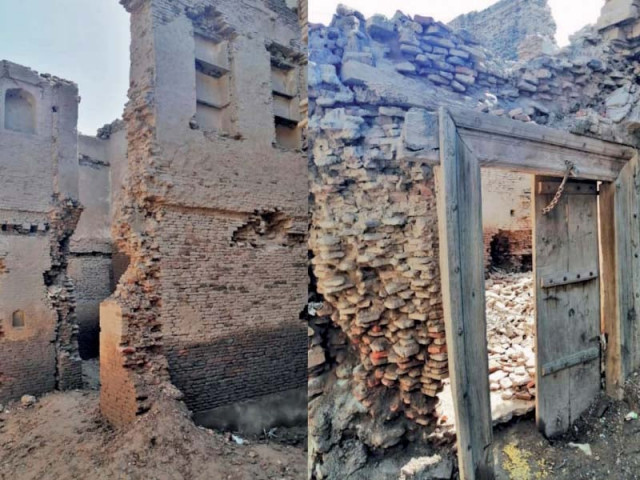Population of Takht Hazara dwindles amid neglect
Locals leave Ranjha’s hometown in search of economic opportunities

PHOTO: EXPRESS
The centuries-old buildings are beginning to wear away and a large number of people have relocated from the village due to economic uncertainty and unemployment.
Meanwhile, the government has not made any plan to develop the place as a tourist spot, although its link with the folk tale has drawn interest across the country as well as abroad.
Ranjha's famed hometown Takht Hazara has a unique identity and historical status. Historical accounts show that when the fall of the Mughal Empire began, Takht Hazara became the victim of lawlessness as groups of Sikh fighters started looting the area. They destroyed the historic city. A large number of the inhabitants left the city and moved to safe places.
Around 1785, people began to settle here again. Thus, after passing through various ups and downs, the city turned into a small village.
Various historical references prove that Ranjha's real name was Dhedo and his father Mojdeen was a farmer.
Hazara province a fundamental right: Hoti
Takht Hazara became famous because of its association with Ranjha whose story was recorded for eternity by Syed Waris Shah. Official statistics show that Takht Hazara has a population of 5,000, while only 20 years ago, the town was home to about 15,000 people. The population has decreased because of lack of employment opportunities and business resources. The number of residents relocating in search of livelihood is gradually increasing.
The historic town is located on the bank of River Chenab, 40km east of Kot Momin in Sargodha district. Across the river, the limits of Hafizabad and Gujranwala districts begin, while Mandi Bahauddin and Gujrat districts are only 3km away. Takht Hazara is thus located at the junction of several districts.
The buildings are made of ancient small bricks but various shades of history and heritage are highlighted when we look at the old structures. These buildings are reminiscent of the passing times. But today the dilapidated state of the village leaves a depressing impression on visitors. The craftsmanship on display through the walls is a great legacy of the past which may become only a monument over time.
Late local author Mian Muhammad Shafi mentioned in his book Sadaf Reze the cultural heritage of Takht Hazara, including an old mosque named after Mian Ranjha whose remains still exist. Mughal King Zaheeruddin Babur also wrote about Takht Hazara in his book Tuzk-e-Babri. In the Mughal era, a spiritual figure Shah Shamuddin lived here and his shrine is located in Takht Hazara, where every year a festival is held in his honour.
Although the land around Takht Hazara is very fertile and its produce is supplied all over Punjab, the farmers face problems due to lack of easy access to big cities. Due to the increasing relocation of people, it is feared that the historical landmarks of the town will disappear.
Published in The Express Tribune, March 14th, 2020.



















COMMENTS
Comments are moderated and generally will be posted if they are on-topic and not abusive.
For more information, please see our Comments FAQ